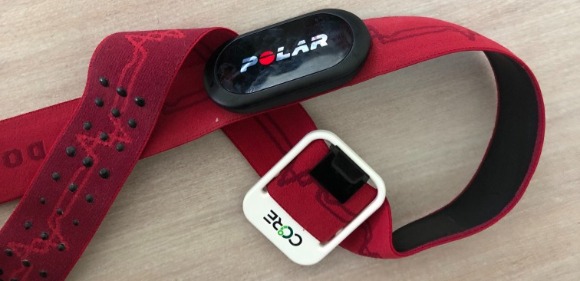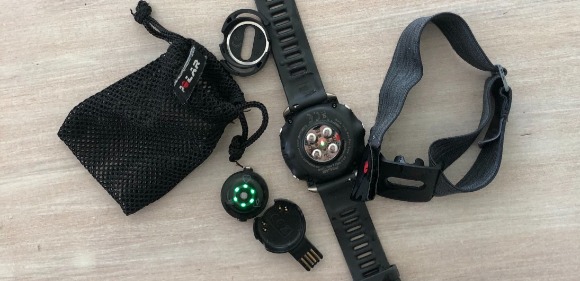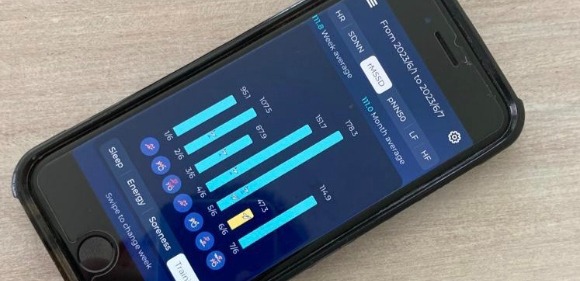Use and Care of your Heart Rate Monitor
Equipment, July 03, 2023
Heart rate monitors have become essential tools for athletes and fitness enthusiasts to track their heart rate during workouts and monitor their overall cardiovascular health. However, encountering issues with heart rate monitors can be frustrating. In this article, we provide troubleshooting tips to help you address common problems such as connectivity issues, inaccurate readings, or discomfort. By following these troubleshooting steps, you can get your heart rate monitor back on track and continue monitoring your heart rate effectively.
A Comprehensive Guide to Using and Caring for Your Heart Rate Monitor
Heart rate monitors have been invaluable tools for athletes for several decades. They enable individuals to track their heart rate in real-time, optimize training intensity, and monitor overall fitness improvements as well as assess cardiovascular health. In this blog post, we will delve into the history of heart rate monitors, explore the different types available, discuss their accuracy and ease of use, evaluate their effectiveness underwater, and provide tips for maintaining and caring for your heart rate monitor.
Evolution of the Heart Rate Monitor
Heart rate monitoring in athletic performance has a long history, dating back to the mid-20th century. Dr. Seppo Säynäjäkangas, a Finnish sports physician, played a crucial role in pioneering its use in training during the 1970s. In the late 1970s, Polar Electro, a Finnish company, introduced the first commercial heart rate monitor for athletes, revolutionizing the industry with their wireless chest strap monitor that provided accurate readings without cumbersome wires or electrodes. Initially popular among elite athletes and coaches in endurance sports, heart rate monitors gained widespread popularity among recreational athletes and the general public in the 1990s and early 2000s. The integration of heart rate monitors into fitness watches and activity trackers further propelled their adoption.

I can still vividly remember seeing the great IRONMAN athlete Pauli Kiuru as one of the first adopters of the Polar Heart Rate monitor when racing IRONMAN in the early 1990's. Also the great Mark Allen, famous for winning the IRONMAN World Championships 6 times, is well known to have relied on how heart rate monitor during his training, a key component of his performance improvements over the years. Mark and his Coach at the time Dr Phil Maffetone seemed to perfect the use of the Heart Rate monitor and his many many wins can be attributed to this
Understanding Heart Rate Monitor Types
Electrode Sensor
Chest Strap mounted electrode sensors provide accurate readings by directly detecting the electrical signals generated by the heart with each heart beat. By capturing these signals, chest strap monitors provide highly accurate and reliable heart rate measurements.

Optical Sensor
(Big word alert)...Photoplethysmography use infrared light to see the expansion of your arteries as your heart pumps blood through them. The Optical Sensor is either mounted to the back of a watch or via small sensor on an arm band or swimming goggle strap.

Smartphone Apps
Whilst these aren't going to be used during exercise, they are an interesting and useful development.
A phone app will leverage built-in sensors on smartphones to measure and track heart rate. These are used for Heart Rate Variablity measurement when not exercising.
HRV 4 Training is a useful app for assessing HRV

Comparing Electrode and Optical Heart Rate Monitors
Ease of Use
Optical monitors tend to pick up the passing of blood immediately when fitted. The electrode type often takes time for optimal skin conduction.
Accuracy
There are some differences in accuracy between electrode and optical heart rate monitors, and it's worth mentioning that both optical sensors and electrode sensors have their own strengths and limitations. Optical sensors excel in terms of convenience, comfort, and ease of use, while electrode sensors, such as those used in chest strap monitors, typically offer the highest level of accuracy. The choice between the two depends on individual preferences, specific use cases, and the level of accuracy required for the intended application.
The direct measurement of electrical signals from the Chest Strap mounted electrode type, such as the Polar H10, generally offers the highest level of accuracy for heart rate measurement. Chest strap monitors operate by detecting the heart's electrical signals, which are not easily influenced by factors such as motion, ambient light, or skin tone. This minimizes the likelihood of interference and ensures more accurate heart rate readings.
The Polar Verity Sense is an optical heart rate monitor that provides freedom of movement and the user has multiple options for viewing and recording a workout. These devices are preferred as the wearer doesn't need to use a chest strap which is often uncomfortable. Due to not requiring an electrcial signal to detect the Heart Rate they can be mounted in various locations (as long as the LED lights are in direct contact with skin). They can be worn on an arm band or clipped onto a goggle strap.
The Polar H10 and Verity Sense monitors also have an Offline Recording mode, so they don't even need to be connected to a watch. The data is simply uploaded to the Polar Flow app after the workout.
Wrist monitors are not as accurate due to light infiltrating between watch and skin, especially if watch not tight enough, too close to wrist bone or forearm movement during activity. As I Coach who's wanting the most accurate data possible I prefer my athletes to use either the chest strap or arm band style of monitor.....the wrong data is worse than no data at all.
Battery Life
Typically the chest strap type will have an improved battery life as they use a Coin Cell battery in the transmitter. One thing I have found with the Chest Strap type, is you should disconnect the transmitter from the sensor after each use to cut the transmitting signal, prolonging the battery life.
A watch with an optical sensor will last as long as the watch has battery life, however these do tend to run out quicker than watches without an optical sensor.
The Optical Sensor type on an arm band or goggle strap doesn’t last as long as the chest type, but are easily charged with the use of the USB charging decive they come with.
Effectiveness Underwater
Later models of Chest Strap monitors have develped to be able to transmit a signal underwater which has improved their use in swimming. However the Polar Verity Sense when attached to a goggle strap will provide an accurate signal, even when worn over a swim cap. Wrist based Optical monitors won’t provide an accurate reading as water can pass between the light sensors and the wearers skin.
How to Use Your Heart Rate Monitor Effectively
Proper Placement and Wearing
Moisten the Electrodes
Before putting on the chest strap, moisten the electrodes on the backside of the strap. This helps improve the electrical conductivity and enhances the accuracy of the heart rate readings.
Position the Strap
Place the strap around your chest, just below the Pectoral muscles, with the sensor module centered on your sternum (the breastbone in the middle of your chest). Try to avoid it being too low on your chest as this will reduce the contact it has on the skin. Make sure the strap isn’t folded or twisted and that the electrodes are in direct contact with the skin.
Adjust the Strap
Adjust the strap for a snug fit without being too tight. It should be secure enough to prevent slipping or movement during physical activity but not so tight that it feels uncomfortable or restricts your breathing.
Perform a Sensor Check
Before starting your workout, perform a quick sensor check. Confirm that the heart rate monitor is detecting your heart rate by checking for a signal or connection with the receiving device (watch, smartphone, etc.). This ensures that the electrodes are making proper contact with your skin and the sensor module is functioning correctly.
6) If using a device like the Polar Verity Sense optical monitor make sure there is no light infiltrating between the sensor and the skin.
Monitoring and Interpreting your Heart Rate Data
This is crucial for optimizing your workouts, tracking your progress, and achieving your fitness goals. To simplify the process of calculating heart rate zones, you can use online tools like the Heart Rate Zone calculator on the Foot Traffic Coaching website. Heart rate zones represent different intensity levels of exercise and are usually expressed as a percentage range of your threshold heart rate. During your workouts or activities, pay attention to your heart rate data displayed on your heart rate monitor device. Aim to stay within your target heart rate zone for the specific exercise or training session. If you're consistently below the target zone, you may need to increase the intensity. Conversely, if you're consistently above the target zone, you may need to adjust the intensity to avoid overexertion.
Care and Maintenance of Your Heart Rate Monitor
Cleaning
Not all straps are designed to be cleaned in the Washing Machine. Detach the transmitting module (if applicable) from the strap before cleaning. This helps protect the module from moisture and potential damage.
In most cases, handwashing is the recommended method for cleaning heart rate straps. Use a mild soap or gentle detergent and lukewarm water. Gently scrub the strap with your hands, paying attention to areas that come into contact with your skin. Avoid using harsh chemicals, abrasive materials, or excessive force that could damage the strap.
After cleaning, rinse the heart rate strap thoroughly to remove any soap or detergent residue. Make sure to rinse both sides of the strap and pay attention to areas with sweat or dirt buildup. After rinsing, gently squeeze out any excess water from the strap. Avoid wringing or twisting the strap, as it may deform or damage the material. Allow the strap to air dry in a well-ventilated area away from direct sunlight or heat sources. Ensure that the strap is completely dry before reattaching the transmitting module (if applicable) or storing it.
For the transmitting module, it's generally recommended to avoid submerging it in water or exposing it to excessive moisture. If the module needs cleaning, use a soft, damp cloth to gently wipe it. Be careful not to get water inside the module or damage any electronic components. Whenever replacing the battery I will give the area around the terminals and the battery cover a thorough clean to remove the build up of sweat residue and skin cells, and gamm.
Refer to the manufacturer's instructions for specific cleaning guidance for the transmitting module.
Battery Life and Charging
If you have a chest strap or arm band optical version then ensure that the device is turned off or in a standby mode to prevent unnecessary battery drain. If applicable, detach any transmitting modules and store them separately to conserve their battery life as well.
Regularly update the device Firmware as maufacturers often release new versions that can optimize battery performance and may improve the overall efficiency of your heart rate monitor.
If you’re using a Wrist based HR Monitor the largest drain on the battery is from the display. Consider changing the settings of your display to reduce the brightness and set shorter Time Out periods. You can also disable the Smartphone connection during activity as you are likely to not require this feature when running.
Troubleshooting and Tips
If you're experiencing issues with your heart rate monitor and it's not working correctly, here are some troubleshooting tips to help you identify and resolve the problem
- Ensure that the battery of your heart rate monitor is not running low. If it's a replaceable battery, consider replacing it with a fresh one. If it's a rechargeable battery, make sure it's fully charged. A low or dead battery can cause connectivity and performance issues, which may manifest as unusually high or low values. The Polar App can give a battery level indicator which is really helpful.
- If you're using a chest strap heart rate monitor, double-check that it's properly positioned and snugly fitted around your chest, just below the chest muscles. Adjust the strap if necessary to ensure good contact between the sensors and your skin. For wrist-based heart rate monitors, make sure it's securely fastened and positioned on your wrist. Sometimes the material of your shirt can create some static which can disrupt the signal, double check this is ok.
- Over time, sweat, dirt, and oils can accumulate on the sensors of your heart rate monitor, which can interfere with accurate readings. Clean the sensors using a soft cloth and mild soap or a designated sensor cleaning solution recommended by the manufacturer. Ensure the sensors are completely dry before using the monitor again.
- External factors like electromagnetic interference or other devices operating on similar frequencies can disrupt the signals between your heart rate monitor and the receiving device. Move away from potential sources of interference, such as high-voltage power lines or strong magnetic fields, and ensure there are no other devices nearby that could interfere with the signal. I have found that if there are a number of devices using Bluetooth in the vicinity then this can cause some intereferrance.
- If you're using a heart rate monitor that connects to a smartphone or other devices, ensure that they are compatible with each other. Check if your smartphone or app supports the specific heart rate monitor model you're using.
- If you've tried the above steps and your heart rate monitor is still not functioning correctly, reach out to the manufacturer's customer support. They can provide further troubleshooting assistance, offer specific solutions for your device, or guide you through any necessary repairs or replacements.
